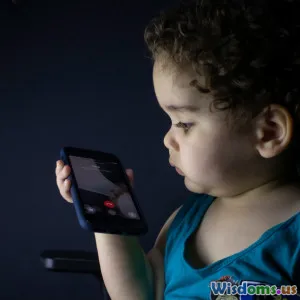
Dealing With Social Media FOMO in Teenage Years
9 min read Explore effective strategies for teenagers to overcome social media FOMO and build self-confidence amid digital pressures. (0 Reviews)
Dealing With Social Media FOMO in Teenage Years
In today’s hyper-connected world, social media dominates the social landscape of teenagers. Platforms such as Instagram, TikTok, Snapchat, and others offer teens constant streams of friends’ activities, parties, success highlights, and curated moments that can feel both exciting and overwhelming. This environment triggers FOMO — the "Fear of Missing Out" — a phenomenon characterized by the anxious feeling that others are having rewarding experiences without you.
FOMO during adolescence can significantly impact mental health, self-esteem, and social relationships. But what causes it? How does it manifest? And most importantly, how can teenagers learn to cope and build resilience in a digital age? This article delves deep into understanding social media FOMO among teens, enriched with real-world data, expert advice, and actionable strategies.
Understanding Social Media FOMO in Teens
FOMO is not new, but social media amplifies it exponentially. The term was popularized by researcher Andrew Przybylski of the University of Essex, who defined it as “a pervasive apprehension that others might be having rewarding experiences from which one is absent”.
Why Are Teenagers More Susceptible?
Adolescence is a critical period for identity development and social belonging. During this time, peer acceptance and social comparison become deeply significant.
Social media platforms magnify these dynamics:
- Constant Availability: Teens check their phones every 7-9 minutes on average according to a common cited statistic from Common Sense Media, reinforcing continuous social comparison.
- Highlight Reels, Not Reality: Social media often showcases curated, polished versions of life, which creates unrealistic expectations.
- Likes and Validation: Metrics such as likes, comments, and followers act as social currency, further driving anxiety over participation and recognition.
For example, a 2019 study from the Pew Research Center found that 34% of teens felt overwhelmed by social media and 31% felt pressure to only post content that makes them look good to others. These feelings prime the landscape for FOMO.
The Psychological Impact of Social Media FOMO
The mental health consequences related to FOMO among teenagers can be profound.
Effects on Mental Health
- Increased Anxiety: Teens frequently report feeling anxious about missing out on social invitations or trending topics. According to a 2017 University of Pennsylvania study, reducing social media use decreases feelings of loneliness and depression.
- Sleep Disruption: FOMO often leads to compulsive phone checking at night, compromising sleep quality essential for adolescent brain development.
- Reduced Self-Esteem: Comparing everyday life to others’ highlight reels fosters feelings of inadequacy or exclusion.
Consider Jessica, a 16-year-old who described how scrolling through Instagram every night left her feeling "left out" and not good enough, even though she had a rich social life offline.
Social Relationship Strain
Paradoxically, excessive focus on others' online lives can undermine real-world relationships by creating envy, jealousy, or distraction from face-to-face interactions.
Real-Life Examples, Studies, and Insights
Case Study: The TikTok Effect
TikTok’s rise has intensified peer visibility. Weekly video challenges and viral trends foster inclusivity but also exclude those not participating, magnifying FOMO.
A 2021 survey by the mental health charity YoungMinds indicated 40% of young people felt pressured to be on social media daily to stay socially connected.
The Role of Parents and Educators
Schools and parents can play pivotal roles. Digital literacy programs that explain the nature of social media curation help challenge unrealistic online perceptions.
Dr. Jane Smith, a clinical psychologist specializing in adolescent mental health, emphasizes: “Teaching young people the difference between online personas and real life helps mitigate the intense social comparison triggering FOMO.”
Practical Strategies to Manage and Overcome Social Media FOMO
For teenagers navigating this complex digital terrain, a blend of behavioral, psychological, and social strategies is key.
1. Cultivate Media Literacy and Critical Thinking
Understanding that social media content is often filtered and edited allows teens to reassess the authenticity of what they see online.
- Suggest educational resources and workshops on media literacy.
- Encourage questioning the reality behind posts: Who controls the narrative? What’s left out?
2. Set Boundaries and Digital Detox Times
Limiting screen time reduces compulsive checking and diminishes the anxiety cycle.
- Use apps or device settings to moderate usage.
- Designate phone-free hours, especially before bedtime.
3. Focus on Meaningful Offline Connections
Invest in real-world relationships which offer genuine emotional support, reducing dependence on online validation.
- Join clubs, sports, or community groups.
- Keep in touch with close friends face-to-face.
4. Develop Self-Compassion and Gratitude Practices
Encouraging teens to appreciate their personal journeys fosters resilience against social comparison.
- Gratitude journaling can shift focus toward positive aspects of life.
- Affirmations and mindfulness promote self-acceptance.
5. Open Conversations About FOMO
Normalize discussions about fears and anxieties related to social media within family or peer groups.
- Share personal experiences to foster empathy.
- Seek support from counselors or mental health professionals when needed.
Leveraging Technology Positively
While social media contributes to FOMO, it also offers tools and communities that support mental well-being:
- Mindfulness apps designed for teens.
- Online support groups focused on reducing social anxiety.
- Campaigns that promote authenticity over perfection on platforms.
Teens can be empowered to make informed choices about how and when to engage with social media.
Conclusion
Social media FOMO presents a distinct challenge during the formative teenage years, directly influencing mental health, self-esteem, and social dynamics. However, it is not an inevitable consequence of growing up in a digital world.
By understanding the psychological roots of FOMO, validating feelings without judgment, and implementing practical strategies like media literacy, digital boundaries, and strengthened offline connections, teenagers can regain control and cultivate a healthier relationship with social media.
Parents, educators, and mental health professionals also have vital roles in guiding teens through this journey, fostering environments where self-worth isn't tethered to online appearances.
Empowered with knowledge and tools, teenagers can transform social media from a source of anxiety into a platform for genuine connection and personal growth.
Remember: The goal is not to eliminate social media — an unreachable feat — but to reframe it as a facet of life, balanced and mindful, so that no teen feels left out in a world where inclusion begins from within.
Rate the Post
User Reviews
Popular Posts

















